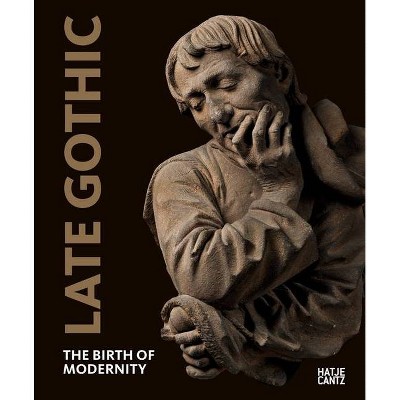The Gothic Child - (Palgrave Gothic) by Margarita Georgieva (Hardcover)

Similar Products
Products of same category from the store
AllProduct info
<p/><br></br><p><b> About the Book </b></p></br></br>"The fascination with dark and deathly threatening spaces, with looming towers and bloody deeds, is now accepted as characteristic of contemporary fantasy and fantastic fictions for children and adolescents. Although this fascination dates back to the gothic genre of the mid-18th century, at that time, the gothic genre was not regarded as suitable for children or young persons in general. However, many young authors' first literary attempts were linked to the gothic genre, and child characters were employed in many of their novels, thereby transforming the gothic into a domain with a predilection for youth. The aim of this book is to rediscover, present and analyze the usage of children in the gothic genre, spanning a period of 60 years from Horace Walpole's The Castle of Otranto (1764) to Charles Robert Maturin's Albigenses (1824). The Gothic Child is almost exclusively based on primary sources. It examines children and childhood in a new light and updates the current definition of the gothic genre by adding to it the archetype of the gothic child. The book also contains analyses of selected films from the 20th and 21st centuries and links the major child-related themes and motifs in them to the 18th and 19th-century representation of the child. "--<p/><br></br><p><b> Book Synopsis </b></p></br></br>The fascination with dark and deathly threatening spaces, with looming towers and bloody deeds, is now accepted as characteristic of contemporary fantasy and fantastic fictions for children and adolescents. Although this fascination dates back to the gothic genre of the mid-18th century, at that time, the gothic genre was not regarded as suitable for children or young persons in general. However, many young authors' first literary attempts were linked to the gothic genre, and child characters were employed in many of their novels, thereby transforming the gothic into a domain with a predilection for youth. <p/>The aim of this book is to rediscover, present and analyze the usage of children in the gothic genre, spanning a period of 60 years from Horace Walpole's The Castle of Otranto (1764) to Charles Robert Maturin's Albigenses (1824). The Gothic Child is almost exclusively based on primary sources. It examines children and childhood in a new light and updates the current definition of the gothic genre by adding to it the archetype of the gothic child. The book also contains analyses of selected films from the 20th and 21st centuries and links the major child-related themes and motifs in them to the 18th and 19th-century representation of the child.<br><p/><br></br><p><b> Review Quotes </b></p></br></br><br><p>"Understanding something that encompasses centuries of individual works in multiple mediums is a challenge. Focusing on the evolution of the child motif, Georgieva's impressive study introduces readers to individual texts and provides an overview. Essential reading for students of Gothic!" - Carol Senf, Georgia Institute of Technology, USA</p> <p>"Reading this book is like peering into a trunk of long forgotten and highly loved novels. Instantly readable and highly engrossing, Margarita Georgieva's thorough study is sure to become a staple in the genre for academics, classrooms, and Gothic aficionados alike." - Curt Herr, Kutztown University, USA</p> <p>"This first significant and substantial study of the role of children in Gothic literature is essential reading for students and scholars alike. Well researched and critically informed, Georgieva's study allows us to view the Gothic Child as never before." - Franz Potter, author of The History of Gothic Publishing, 1764-1830</p><br><p/><br></br><p><b> About the Author </b></p></br></br><p>Margarita Georgieva is a lecturer at the Université de Nice in France. She teaches professional translation and English courses. Her most recent translation is Dr Vanessa Marcié's Culture and Politics in France (2012). Georgieva's research interests range from 18th and 19th-century gothic to science fiction, fantasy literature and the child.</p>
Price History
Price Archive shows prices from various stores, lets you see history and find the cheapest. There is no actual sale on the website. For all support, inquiry and suggestion messages communication@pricearchive.us



















